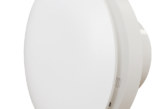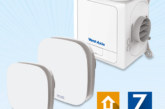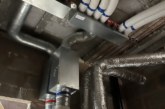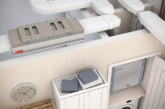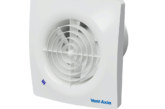Jordan Lilford, Product Manager at Vent-Axia gives tops tips on what you should look out for when specifying MVHR to improve Indoor Air Quality.
Mechanical Ventilation with Heat Recovery (MVHR) is on the rise, not only does is tick all the right specification boxes offering quiet, energy efficient ventilation for new build homes but a growing awareness for the need for good indoor air quality (IAQ) is highlighting MVHR’s benefits. Here are four tops tips on what you should look out for when specifying MVHR to improve IAQ.
Filtration
MVHR filters can remove pollen, debris and products of pollution, protecting the heat exchanger from blocking and ensuring the indoor air is cleaner and healthier than air that would come in via a window. Filters up to ISO ePM2.5 70% (F7 grade) ensure even homes in heavily urbanised areas can filter out most impurities, up to and including PM2.5 particles, for example diesel particulates. A filter check warning can alert households when filters need changing, helping to maintain the quality of incoming air.
Going one step further to improve IAQ, there are filtration units now available that are fitted to an MVHR unit’s intake airflow incorporating two types of filtration—activated carbon and particulate filters to achieve even higher levels of filtration. Offering housebuilders a choice of filtration to suit the application, the filtration units can offer ISO 65% Coarse (G4) or ISO ePM2.5 70% (F7) particle filters. Enhanced activated carbon filtration also removes unpleasant odours and harmful gases such as Nitrogen Dioxide (NO²).
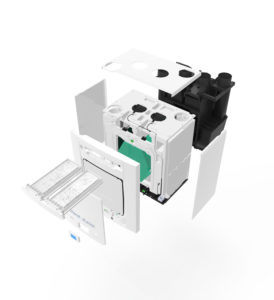 Controls
Controls
To ensure effective efficient ventilation, that meets the IAQ needs of any home, an integral infinitely variable fan speed control on supply and extract is vital. Another control function that is essential to improving IAQ is an integral humidity sensor which increases fan speed in proportion to relative humidity levels, saving energy and reducing noise for the end user. This type of sensor reacts to small but rapid increases in humidity, even if the normal trigger threshold is not reached, ensuring adequate ventilation, even for the smallest wet room. A night-time relative humidity setback feature suppresses nuisance tripping as humidity gradually increases with falling temperature. Other controls options available can include delay on, scheduling and CO² sensors.
App Commissioning
With the Internet of Things growing in popularity App-controlled MVHR units are now available allowing consumers to monitor efficiency, boost airflow, schedule ventilation or order filters. As well as these consumer benefits, there are now App-controlled MVHR units available that aid commissioning, helping ensure optimum performance, so improving IAQ. The latest controls with Wi-Fi-connection via an App offer installers a commissioning process which simply removes the need for installers to repeatedly return to the unit during airflow commissioning. A simple idea enabled by a smart phone App that makes a huge difference to installation ease and speed. No more climbing up and down stairs or into lofts – which is easier and timesaving – reducing cost of install.
Air Quality Sensors
With the general public’s increasing awareness of the need for good IAQ this trend points towards an increase in air quality sensors being incorporated in MVHR units. With MVHR units often installed in lofts or other locations where they are difficult to monitor; wired controllers or Apps (if the unit is Wifi-enabled) can be used to display messages from the unit in the dwelling’s main living space. Remote LEDs can be used to alert the end-user when there is a fault with the unit.


